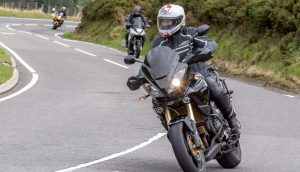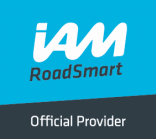WAM Free Taster
The best way to find out more about advanced riding is to experience it for yourself.
So come and enjoy a free taster ride with us !!!
We’d like to invite you to come and take a short ride with us, for free, we’ll welcome you and be pleased to answer any questions you may have before we ride together on convenient roads close to you. Everyone is welcome, all you need is a full licence and your own motorcycle. Simply click here to book your Free Taster.
Associate Training Programme
Terms :
ARC – Advanced Rider Course
LO – Local Observer
CO – Chief Observer
NO – National Observer
TO – Trainee Observer
- When a rider joins IAM (Roadsmart) and signs up to do the ARC they do so as an associate and they are given details of their local group. When their details are received by WAM :
- The groups associate controller will contact them and assign them either a LO or NO, who will assist them in developing the skills to improve their riding. This process is based on “one to one” rides with the observer giving ongoing feedback, demonstrations and suggestions on how to improve their riding.
- The associate may also be allocated to a TO. If this is the case, then a NO will also be allocated to the associate. It is the NO who is always responsible for the associates development. This will ensure that a standard consistent with that which would be expected from a LO is maintained.
- A LO and their associate may sometimes be joined by a TO to help with their observer training. This would be with prior agreement of both the associate and the LO.
- When it is considered by the observer that the associate has completed the ARC and are riding consistently at test standard, they will contact the CO to arrange a pre-test ride with a NO. This is to enable the associate to experience the environment and a route that replicates the type of roads that might be experienced during their actual test. The associate’s observer is welcome to follow on the pre-test ride.
- The NO will provide feedback based on the pre-test ride to both the associate and the observer. The associate will be advised to apply for their test or be referred to their observer for further development of their riding. This is of benefit to the associate and provides a monitoring function for the observer.
Training Structure and Training Elements
An introduction to IPSGA
Information, Position, Speed, Gear and Acceleration The system at the core of Advanced riding The competencies framed by IPSGA
Core Riding Skills
The skills required to operate a motorcycle’s controls with a degree of finesse. For example, changing gear in a smooth and timely fashion and steering accurately
Bends
The practices and techniques required to safely negotiate bends and corners. For example, correct positioning, acceleration and the use of limit points
Junctions and Roundabouts
How to safely enter, negotiate and leave junctions & roundabouts while executing the ‘planning to stop but looking for information to go’ approach required of advanced riders
Overtaking
All the necessary pointers for building awareness and good practice when overtaking; the area where riders are most likely to come into conflict with another road user
Motorways and Dual Carriageways
How advanced riders should demonstrate awareness of the differences between motorways and dual carriageways, the likely hazards and how to avoid them
Slow Riding
The markers of confidence and proficiency that an advanced rider must display when riding in traffic and performing manoeuvres at the side of the road and in car parks


